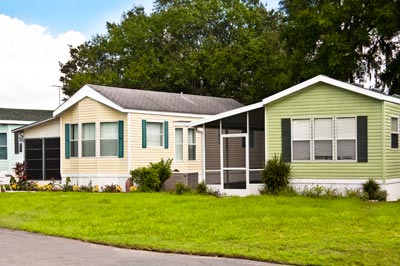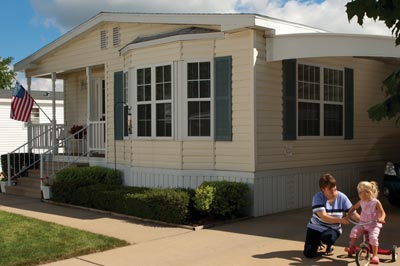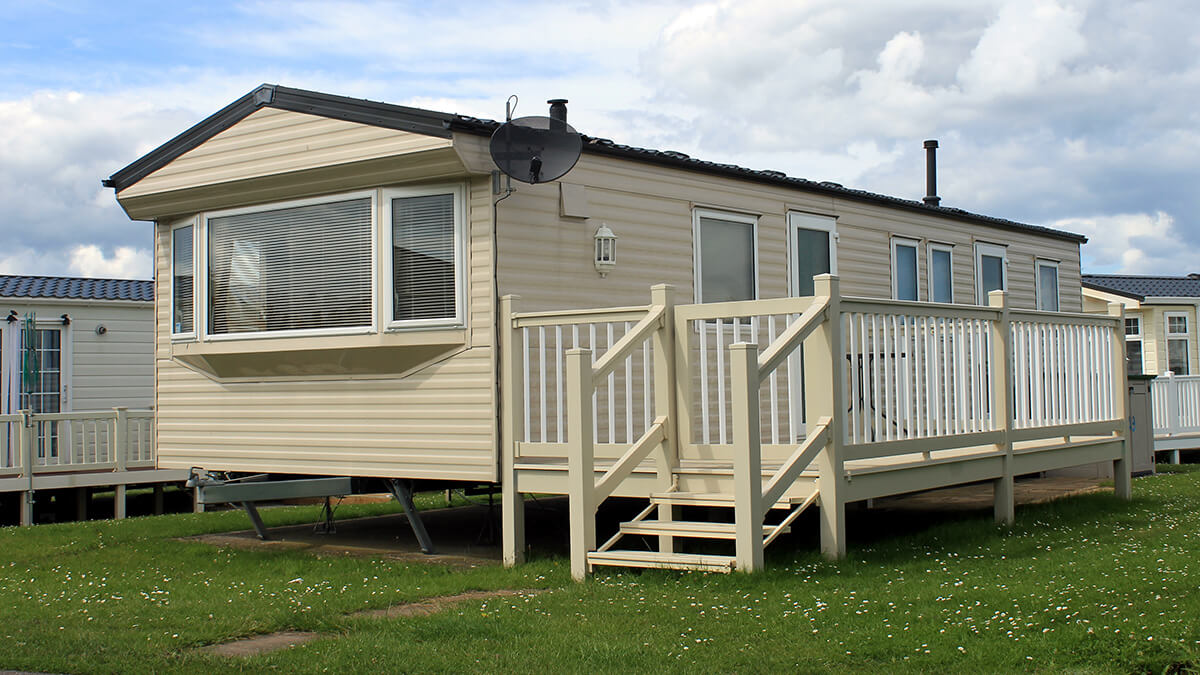Shingle repair for mobile homes

The process for installing shingles on mobile homes is exactly the same as site-built homes. However, on site-built homes, two or three layers of shingles are acceptable. On a mobile home, one layer is the limit.
This means, if your shingles need replacing, that's exactly what you need to do – remove and replace them. You can't solve the problem by covering them with a second layer of shingles.
The reason is weight. A square of shingles that only covers 100 square feet, weighs about 240 pounds. Your roof might require nine or more squares. Mobile home roof trusses aren't built to handle the weight of a double layer of shingles.
Fix-It Tips!
If possible, replace your shingles on a hot day when they are more pliable and seal better.
Seal minor splits and cracks to shingles with roofing cement. You can also try to cement down curled shingles-but they will probably have to be replaced.
When Shingles Wear Out
Fiberglass and asphalt shingles are durable, water resistant, roofing materials. Under ideal conditions, some of the higher quality shingles may last 30 years, but that is optimistic. If your shingles have been up for 15 or more years, you might need to re-roof in the not-too-distant future – especially if you live in a snowbelt or high heat area. In addition, shingles on mobile homes with low-slope roofs have a tendency to wear out earlier. On a roof with less pitch, the shingles are more exposed to sun, water and snow.
It's important to periodically examine your shingles for damage after you have removed all debris. Check them every spring and fall, and after a hailstorm or high winds. Promptly replace any cracked, curled-up, broken or missing shingles. If you don't, rain water could seep under the sheathing and leak into your sidewalls or ceiling.
Examine the roof up close from a ladder. Particularly check the roof ridge and valleys for cracked shingles, and the bottom and side rows for curled back or broken shingles.
Replacing a damaged shingle is a relatively easy repair.
What You'll Need to Replace Shingles
Materials:
- replacement shingles
- roofing nails
- roofing cement
Tools:
- hammer
- utility knife
- long knife
- small piece of plywood.
Step 1: Cut through sealer strips
If installed properly, each shingle should have eight nails holding it in place: four in the middle, about ½ inch above the tab cutouts (these four nails also go through the top of the shingle below), and four along the top (these four nails are pounded through the middle of the shingle above). See the diagram that shows how shingles are installed.
To replace one shingle, you need to loosen at least three shingles: the one being replaced and the two shingles on the two rows above the damaged shingle. You will need to cut through the sealer strip (also called “adhesive line”) on these shingles. The sealer strip is a dashed line of asphalt adhesive that runs across the middle of the shingle. To loosen, slide a long knife, putty knife or small crowbar under the damaged shingle. The tool must reach over halfway up the shingle. Slide it along the entire length of the shingle. Repeat this procedure for the shingles on the two rows above the damaged shingle.
Step 2: Remove nails along middle of damaged shingle
You do not want to crack or split the shingles above or below the damaged shingle. Carefully slide a pry bar under the damaged shingle. You might want to slide a piece of plywood under the pry bar to protect the shingle underneath. Gently pry up the damaged shingle, being careful not to damage the shingles above. You do not need to pry the damaged shingle up very far-just enough to loosen the four middle nails.
Remove the pry bar and plywood. Carefully lift up the tabs on the shingle above the damaged shingle. Work the nails (in the middle of the damaged shingle) back and forth with your fingers until you can remove them.
Step 3: Repeat procedure on next level
Remove the four nails holding down the top of the damaged shingle. Because these nails are also holding down the middle of the shingle just above, you will need to gently pry up this shingle to loosen nails.
Carefully slide the pry bar under the shingle just above the damaged shingle. Repeat the previous procedure to loosen nails. You do not need to remove these nails. Loosen them just enough so they no longer go through the damaged shingle.
Step 4: Remove shingle
Slide out the damaged shingle. Use it to size the replacement shingle (if it is not full width.)
Step 5: Replace shingle
Make sure the replacement shingle is the same size as the old shingle. If not, use a utility knife to cut to fit. Slide new shingle into place, and set flush with adjacent shingles. It should fit snugly.
Step 6: Nail
Attach shingle with roofing nails. To prevent leaks, pound nails in already existing holes. If this is not possible, seal the existing nail holes in the shingles with roofing cement.
You will probably need to pound in the nails after you have laid all the shingles flat. This means you will have to hit the nails through the shingle immediately above. To prevent damaging the shingles, place a board on top of the shingle and hit the hammer on the board.
Step 7: Cement
Cover all the nails with roofing cement. Press the upper shingles on top of the cement to seal. You may need to weight it down overnight.





